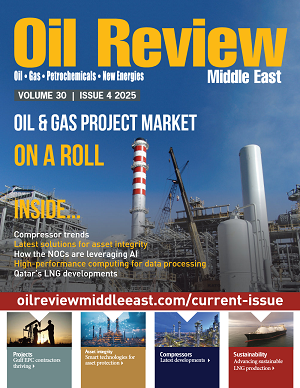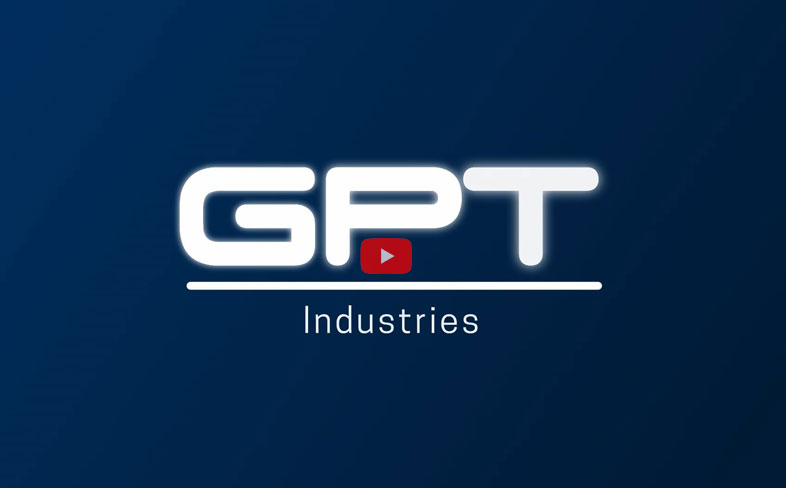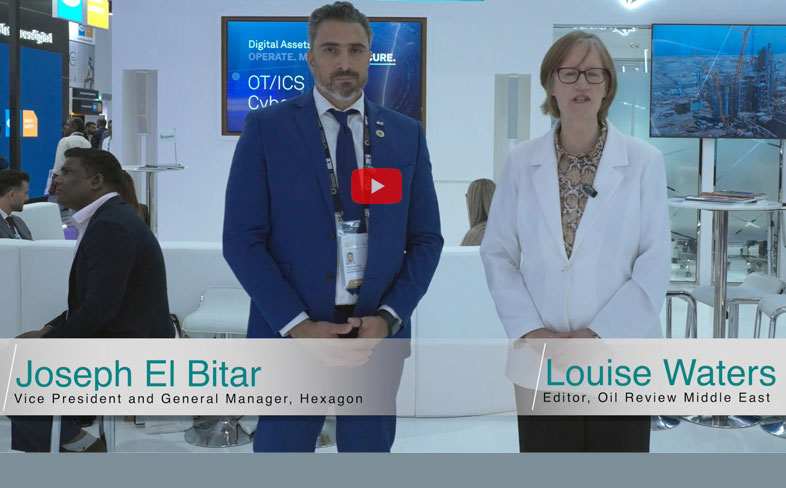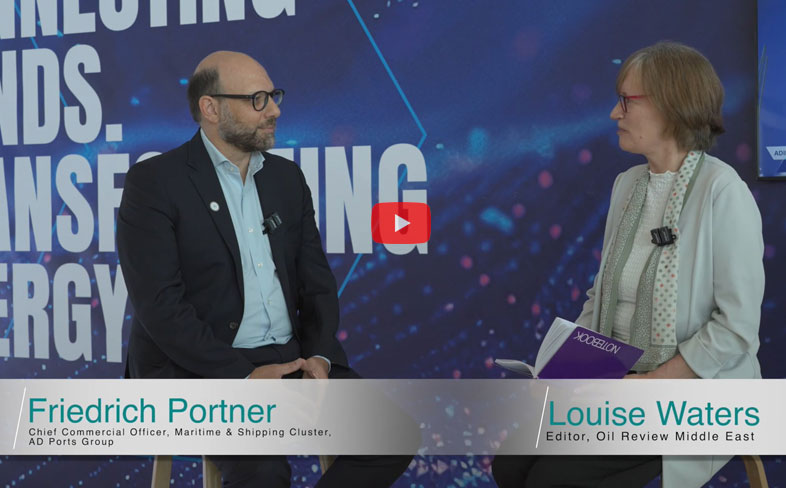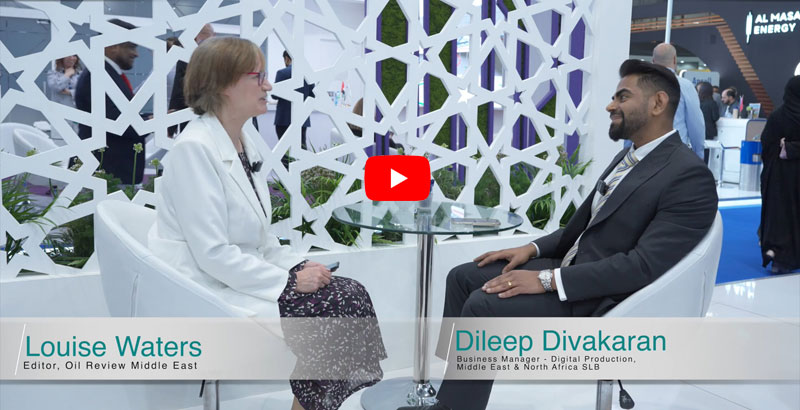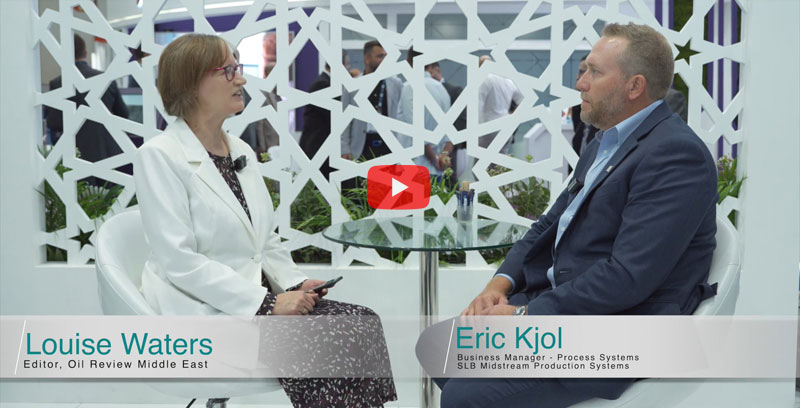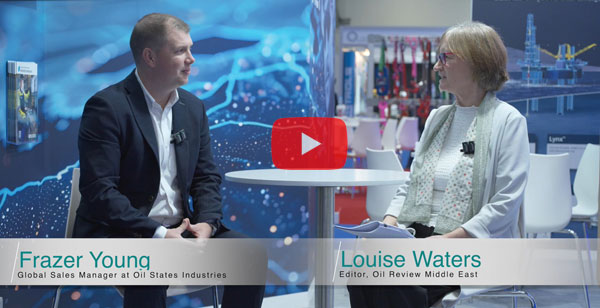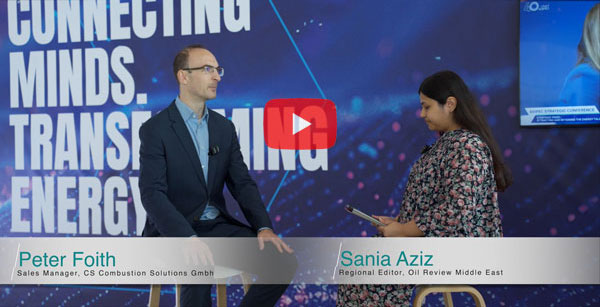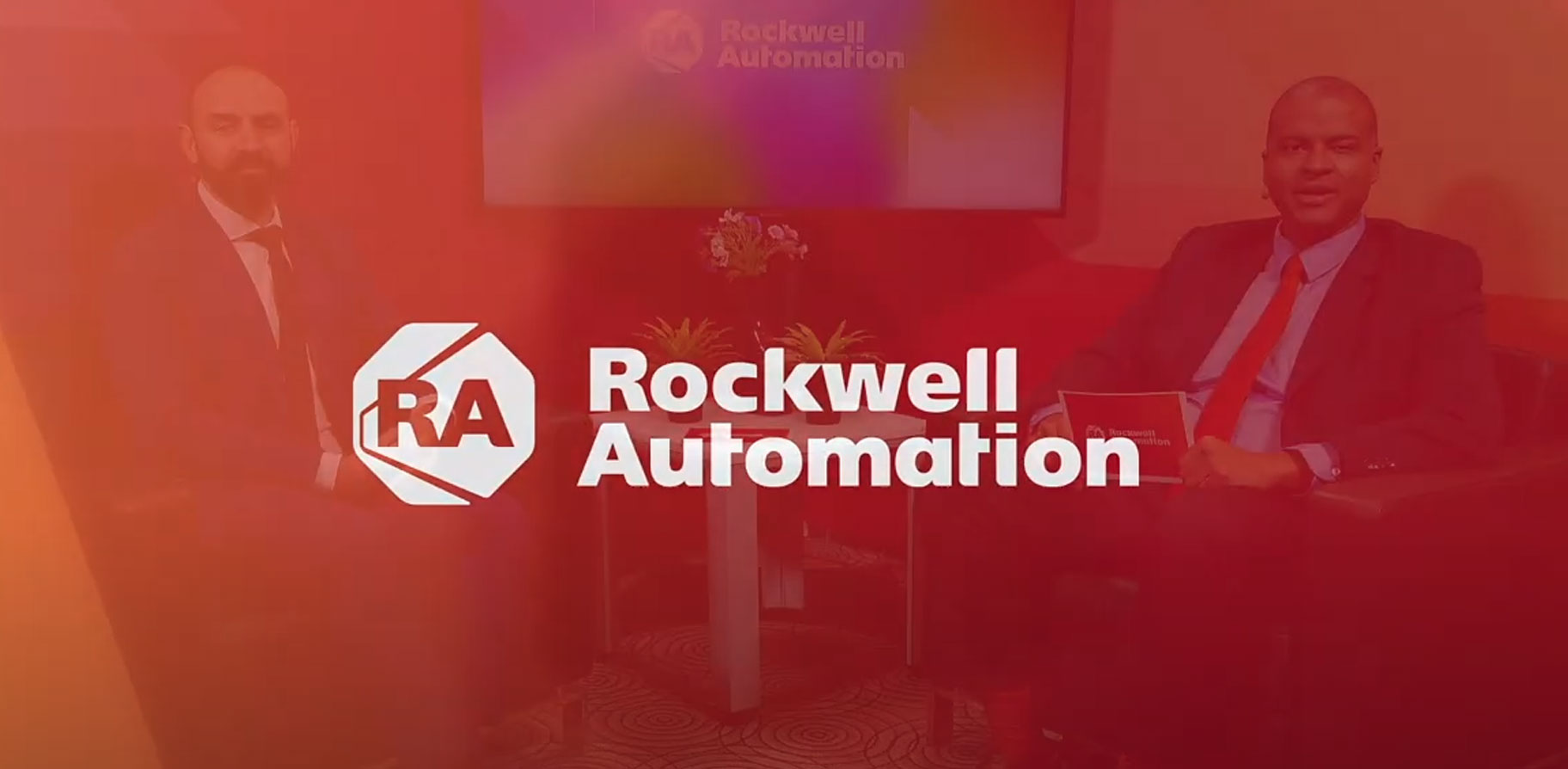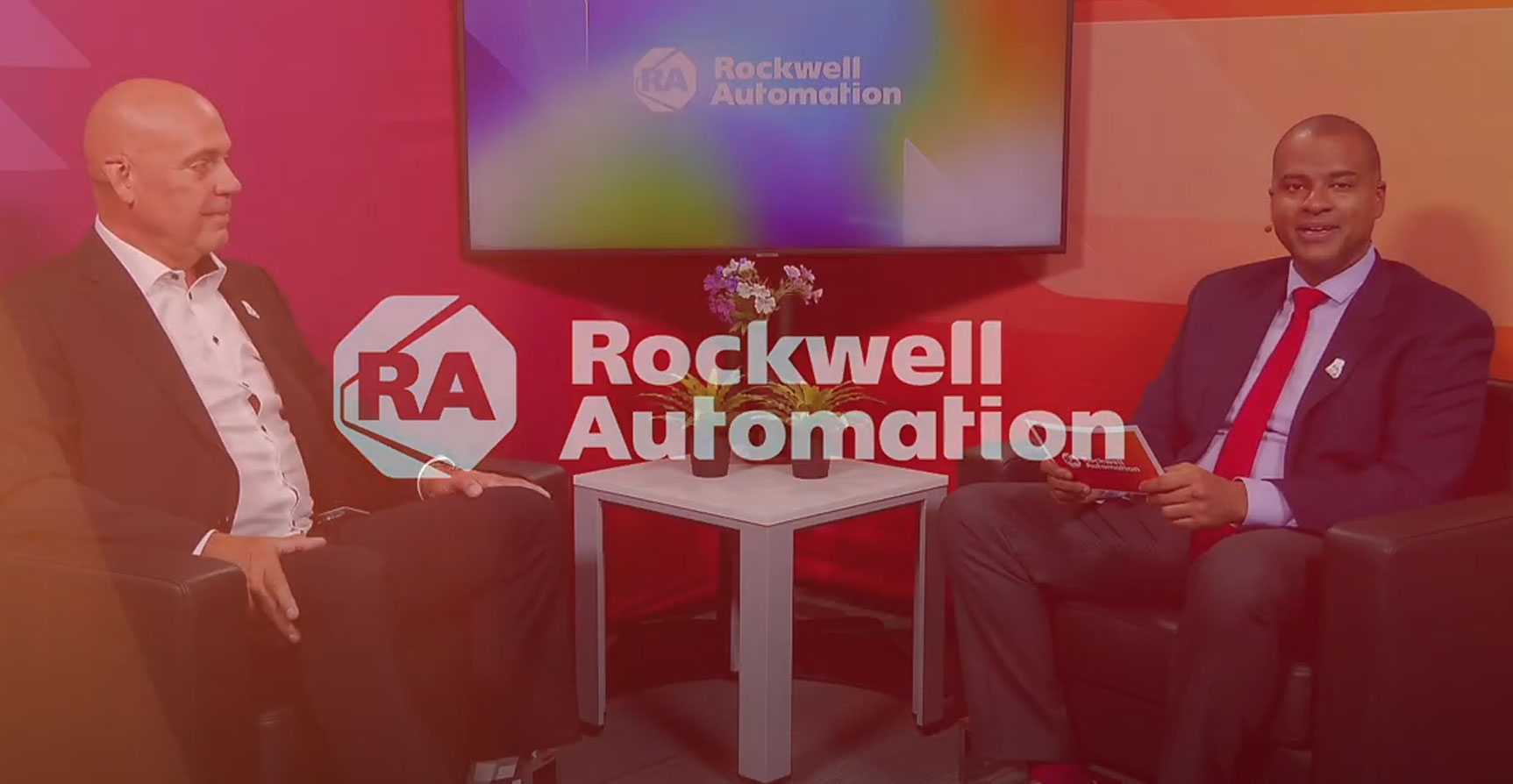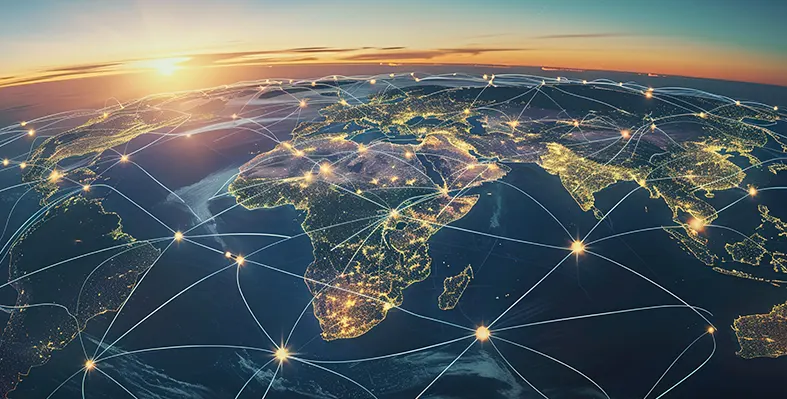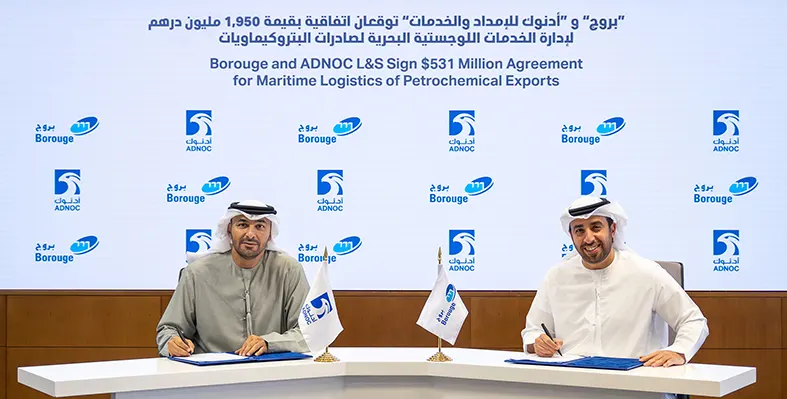In The Spotlight
Transforming oil and gas in the Middle East through AI and data
Mohamed Zouari, general manager for the Middle East, Africa, and Turkey at global AI and data cloud company Snowflake, argues that the future of oil and gas hinges on integrating AI and data throughout the value chain
Energy, the driver of the global economy, is undergoing one of the largest shifts of our time, propelled by hundreds of trillions of dollars in global investment over the next 25 years. The Middle East, home to the world's lowest-cost producers and the largest reserves, is positioned at the heart of this transformation. According to OPEC, the region is forecast to provide nearly 60% of global oil exports by 2050.
Against this backdrop, Middle Eastern nations are embedding digital transformation in their national strategies. The UAE’s forward-thinking initiatives, like Masdar City, alongside Saudi Arabia’s giga projects under Vision 2030, illustrate the regional ambition to lead in innovation. With oil exports comprising about 30% of the UAE’s GDP alone, the stakes are high. Data and AI are emerging as vital tools in this evolution, enabling companies to modernise infrastructure, generate real-time insights, and align operational decisions with long-term business objectives. As energy companies navigate this landscape, data and AI are becoming critical enablers for growth, operational excellence, long-term resilience and informed strategy across the oil and gas value chain.
Navigating the digital age
While the opportunity is immense, oil and gas companies face several critical challenges on the path to transformation.
One major obstacle is the need to digitise ageing infrastructure. Decades-old grids and oil wells must now integrate with millions of IoT-enabled assets like wind turbines and solar panels, creating an influx of zettabytes of operational and information technology data that requires efficient ingestion, cleaning, and analysis to drive smarter, faster decision-making.
Extreme weather, geopolitical dynamics, and the variability of renewable energy sources are contributing to more volatile commodity markets. Stable long-term contracts signed with countries like China, Japan, and India offer some security, but sophisticated data analytics are crucial to managing financial exposure and mitigating risks. Enhanced by AI and ML, predictive models can now draw on both internal and external data sources to forecast price fluctuations and demand trends more accurately, helping companies navigate volatile markets with greater confidence.
Corporations now demand rigorous environmental, social, and governance (ESG) reporting, while consumers seek intuitive, tech-driven home energy systems. Energy service providers – from utilities to oil and gas firms – must be agile, transparent, and responsive or risk falling behind.
Compounding these challenges is the overwhelming volume of unstructured data, which now represents 90% of all data according to Snowflake’s Data Trends Report. Without a centralised, secure, and scalable data infrastructure, energy companies will struggle to extract actionable insights.
AI and data strategies in practice
Modern AI and data strategies are offering new pathways to navigate this complex environment. Organisations are moving beyond traditional data management toward platforms that can unify siloed information, enable seamless collaboration across ecosystems, and deliver near real-time insights at scale.
At the core of this transformation is the ability to bring together operational, financial, and customer data into a unified environment. By doing so, oil and gas companies gain a single source of truth that supports more informed decision-making across their entire value chain – from field operations to trading desks to customer-facing platforms.
AI is also fundamentally reshaping how companies approach forecasting, maintenance, and customer engagement. Machine learning models are increasingly used to detect anomalies in equipment performance, allowing for predictive maintenance that minimises costly downtime. In trading operations, AI-driven models help forecast commodity prices with greater accuracy, enabling companies to optimise their portfolios and manage risk proactively.
For personalised customer engagement, companies can leverage real-time customer data and generative AI capabilities to deliver tailored recommendations and intuitive energy management solutions, improving satisfaction and loyalty in a highly competitive market.
Organisations that focus on building robust data foundations are better positioned to drive tangible outcomes, from optimising asset utilisation to accelerating sustainability initiatives. Snowflake’s research shows that 92% of early adopters have already realised a return on their AI investments, and 98% plan to increase AI spending in 2025.
With AI’s contribution to regional economies forecast to grow between 20% and 34%, AI is becoming a blueprint for the next generation of energy operations. The ability to seamlessly integrate and analyse vast, diverse data sets in real time is becoming a decisive competitive advantage.
The next chapter
By embracing AI and modern data strategies, oil and gas companies can digitise operations, manage volatility, anticipate customer needs, and chart a course for long-term resilience and growth – a necessary shift as fragmented data infrastructures and talent shortages remain real hurdles.
In a world increasingly defined by energy transition, those who invest early in scalable data and AI capabilities will not just survive – they will lead. The region’s commitment to digital innovation positions it well to remain a global energy powerhouse well into the future.
Vessel market hit by trade tensions
New US tariffs and escalating global trade tensions have impacted vessel markets in the first half of 2025, depressing investment in some sectors while accelerating strategic orders in others, according to a report by Veson Nautical, a leading provider of maritime freight management solutions and data intelligence
Tanker slowdown
The tanker sector saw a marked slowdown, with newbuilding orders down 74% y-o-y and S&P volumes falling by 31%. Softer earnings and regulatory uncertainty were key drivers. Medium Range 2 (MR2) product tankers bucked the trend, accounting for over a third of transactions as buyers capitalised on lower values. Usually sized between 45,000 and 55,000 DWT, MR2s are product tankers that typically ship gasoline, diesel, jet fuel and other refined products across regional and intercontinental routes. Values for 15-year-old units fell by 24%, drawing renewed interest in ageing but versatile tonnage.
Pressure on the LNG carrier sector
The LNG carrier sector came under sustained pressure during the first six months of 2025, with average time charter earnings for large vessels falling by 66% y-o-y. The decline was driven by continued fleet expansion outpacing demand growth, along with weaker seasonal fundamentals. As rates fell, demolition activity increased sharply, with seven vessels scrapped—a 250% rise on the same period in 2024. Older steam turbine vessels saw the steepest value declines, with 15-year-old units down by more than 8%. While demand for LNG is expected to rise in the coming years, the current tonnage surplus is likely to keep pressure on earnings through the rest of 2025.
Tariff uncertainty hits the LPG carrier sector
In the liquid petroleum gas (LPG) carrier market, S&P activity slowed by 25% y-o-y, weighed down by trade policy uncertainty between the US and China. Newbuilding orders dropped by 80% compared with the same period last year. Most activity was concentrated at the very large and small ends of the fleet, with limited momentum in the midsize space. Values fell across the board, though long-term averages remain high by historical standards.
“Geopolitical pressure is no longer a background factor; it’s shaping the way owners think about risk, timing and capital,” said Matt Freeman, chief market analyst at Veson Nautical. “From regulation to rerouting, disruption is now part of the operating environment, and owners are recalibrating their strategies accordingly.”
bp and Shell to evaluate Libya oilfield redevelopment opportunities
bp and Shell have signed agreements with Libya’s National Oil Corporation (NOC) to evaluate hydrocarbon redevelopment prospects in some of Libya’s major oilfields
Under the MoU signed by bp, the company will evaluate redevelopment opportunities in the mature giant Sarir and Messla oilfields in Libya’s Sirte basin, including the exploration potential of adjacent areas, and look at the wider unconventional oil and gas potential within the country.
The agreement provides a framework for bp to assess a range of technical data and to work with the NOC to evaluate opportunities and determine the feasibility of future development and exploration programmes.
William Lin, bp executive vice president gas & low carbon energy, said: “This agreement reflects our strong interest in deepening our partnership with NOC and supporting the future of Libya’s energy sector. We hope to apply bp’s experience from redeveloping and managing giant oil fields around the world to help optimise the performance of these world-class assets. We look forward to conducting thorough studies, working closely with NOC, to evaluate the resource potential of this promising region.”
The Sarir and Messla oilfields are among Libya’s largest, offering scope for a significant potential addition to bp’s Libya portfolio, according to a bp statement.
bp has confirmed its intention to resume operations in Libya and reopen its office in the capital, Tripoli, within the last quarter of 2025. bp resumed exploration in the onshore areas of Libya in 2023 after a 10-year joatis. along with a number of other international oil companies.
The MoU was signed at a ceremony in London, when Eng. Masoud Suleman, chairman of the NOC, welcomed bp’s return to operations in Libya and the expansion of the partnership between the two parties. He called for the cooperation between the NOC and bp to include training technical and leadership staff in Libya’s oil sector.
The NOC has also reached an agreement with Shell for the company to evaluate hydrocarbon prospects and conduct a comprehensive technical and economic feasibility study to develop the al-Atshan field and other fields fully owned by the NOC.
Libya is currently producing around 1.2mn bpd but is looking to bump this up to 2mn bpd by 2028. However, progress has been hampered by political unrest and factionalism in the aftermath of the civil war, and the existence of two rival governments. Libya is keen to attract international companies to redevelop its oil and gas sector, and there is significant international interest in its largely untapped hydrocarbon potential, as demonstrated by the number of bids submitted following the launch of its international bid round earlier this year, results of which are expected in around November. This offers 22 blocks for exploration and development (11 Offshore and 11 Onshore) including areas with undeveloped discoveries estimated to contain a minimum of 2.0 Bboe in hydrocarbon resources.
Middle East on track to become second-largest gas producing region in 2025
The Middle East is set to overtake Asia to become the world’s second-largest gas producer in 2025 after North America, according to Rystad Energy research and analysis
Gas production in the Middle East has grown by about 15% since 2020, as regional producers seek to monetise gas reserves and develop export potential to meet global demand.
The region currently produces about 70bn cubic feet per day (Bcfd) of gas, a figure that is forecast to increase by 30% by 2030 and 34% by 2035 thanks to significant developments in Saudi Arabia, Iran, Qatar, Oman, and the UAE. By 2030, the region will add another 20 Bcfd, around half of which will be needed to meet rising domestic demand, with the rest available for export to Europe – which is keen to reduce its reliance on Russian energy – and fast-growing markets in Asia. Iran is currently the Middle East’s leading gas producer, at around 25 Bcfd, followed by Qatar at 16 Bcfd and Saudi Arabia at 8 Bcfd. But with Qatar’s production projected to rise nearly 50% to 24 Bcfd, driven by the ongoing development of its massive North Field, the country is expected to overtake Iran as the Middle East’s largest gas producer in the early 2030s.
“As more long-term gas contracts are signed and export volumes rise, the Middle East is on track to become a key energy hub for countries seeking stable and dependable sources of natural gas,” said Mrinal Bhardwaj, senior analyst, Upstream Research at Rystad Energy.
Qatar, the UAE and Saudi Arabia are leading this growth, with Qatar’s ambitious North Field expansion set to boost its LNG capacity by 80%, from 77 to 142 million tonnes per annum (Mtpa) by the end of the decade, while maintaining a competitive breakeven price of under US$6 per MMBtu.
“A drop below US$6 per MMBtu is not ideal for investments, but Middle Eastern projects remain highly resilient due to their low breakeven costs, typically below US$5 per thousand cubic feet. Even in a prolonged low-price environment, we expect strong production growth from the region. While some final investment decisions could be delayed in such a scenario, the overall impact on output should be limited,” added Rahul Choudhary, vice president, Upstream Research at Rystad Energy.
Rystad expects investments of more than US$50bn in the region’s LNG developments, as the region looks to strengthen its position in the global LNG market, with Qatar adding 48 Mtpa through its North Field East and North Field South projects. The UAE will contribute an additional 10 Mtpa from the Ruwais LNG project, and TotalEnergies is developing the Marsa LNG project with a capacity of 1 Mtpa in Oman. The new volumes of LNG produced in both Qatar and the UAE are primarily earmarked for Asian and European buyers, with Chinese national oil companies and global energy majors emerging as key buyers.
Gas flaring continues to rise, finds World Bank
Global gas flaring at upstream oil and gas facilities has risen for a second year in a row, according to the World Bank’s annual Global Gas Flaring Tracker
Flaring rose by 2% to 151 billion cubic meters (bcm) in 2024, the highest level in almost two decades. Around 389mn tonnes of CO₂ equivalent – 46mn of that from unburnt methane, one of the most potent greenhouse gases – was needlessly emitted, wasting about US$63bn in lost energy and setting back efforts to reduce emissions and boost energy security and access.
While some countries have reduced flaring, the top nine largest-flaring countries continue to account for 75% of all flaring, but less than half of global oil production. Russia, Iran, Iraq, the USA, Venezuela, Algeria, Nigeria, Libya, and Mexico remain the top nine flaring countries in 2024. These countries are together responsible for over 75 % of global gas flaring while producing less than 50% of the world’s oil. The largest increases in flare volumes in 2024 occurred in Iran, Nigeria, the USA, Iraq, and Russia (in order of the flare volume increase). Together, these five countries accounted for 4.6 bcm of the additional gas flaring.
Iran’s 12% increase in flaring is primarily attributable to an equivalent rise in oil production, along with a continued lack of investment in associated gas recovery and utilisation. Consequently, the flaring intensity was more than three times the global average.
However reductions in gas flaring were observed in Algeria and Libya, mainly due to lower oil production.
Satellite data in the Global Gas Flaring Tracker shows that flaring intensity—the amount of gas flared per barrel of oil produced—has remained stubbornly high for the last 15 years. All top flaring countries saw an increase in their flaring intensity compared to 2012, except for Iraq and the USA. In Iraq, flaring intensity remained largely unchanged. The USA, which reduced its flaring intensity by almost 50% compared to 2012, now has one of the lowest intensities globally.
The report highlights that countries committed to the Zero Routine Flaring by 2030 (ZRF) initiative have performed significantly better than countries that have not made the commitment, achieving an average 12% reduction in flaring intensity since 2012, whereas those that did not saw a 25% increase. ZRF-endorsing countries with lower flaring volumes, including Brazil, Colombia, Egypt, Indonesia, and Kazakhstan, have demonstrated progress.
To accelerate progress, the World Bank’s Global Flaring and Methane Reduction (GFMR) Partnership is supporting methane and flaring reduction projects through catalytic grants, technical assistance, policy and regulatory reform advisory services, capacity building, and institutional strengthening. For example, in Uzbekistan, GFMR allocated US$11mn to identify and fix methane leaks in the gas transportation network, cutting methane emissions by 9,000 tonnes annually, and potentially reaching up to 100,000 tonnes each year.
“Governments and operators must make flaring reduction a priority, or this practice will persist. The solutions exist. With effective policies we can create favourable conditions that incentivise flaring reduction projects and lead to sustainable, scalable action. We should turn this wasted gas into an engine for economic development.” said Zubin Bamji, World Bank manager for the Global Flaring & Methane Reduction (GFMR) Partnership.
Borouge and Honeywell to collaborate on autonomous operations
Abu Dhabi-based petrochemicals company Borouge is collaborating with Honeywell to conduct a proof of concept for AI-powered autonomous operations, which is is set to deliver the petrochemical industry’s first AI-driven control room designed for full-scale, real-time operation
The initiative aims to deploy the proof-of-concept technologies to enhance Borouge’s operations across its Ruwais facilities in the UAE. Autonomous operations will enable Borouge to optimise production, reduce energy use, and enhance safety while reducing costs at what will be the single largest petrochemical site in the world. Both companies will leverage their expertise in process technology and autonomous control capabilities to identify new opportunities to deploy Agentic AI solutions and advanced machine learning algorithms.
The project is a key component of Borouge's companywide AIDT programme, which is projected to generate US$575mn in value this year. In 2024, Borouge’s portfolio of over 200 AIDT initiatives—spanning operations, health and safety, sales, sustainability, and product innovation—generated $573mn in value
Borouge has already installed the world’s largest Real-Time Optimisation (RTO) system across three large-scale ethane crackers and 20 furnaces. The initiative analyses over 2,500 parameters per minute, enabling instant data-driven decisions, significantly enhancing productivity, optimising energy consumption and reducing emissions. The unique system minimises ethane dumping and optimises resource use, in line with Borouge's commitment to sustainable growth and operational excellence.
Borouge has invested in its state-of-the-art Innovation Centre located in Abu Dhabi and is now using advanced AI-powered tools to accelerate innovation, enabling the company to bring new grades of advanced polymers to market quicker. In collaboration with ADNOC AI Lab, Borouge has completed its first “Polymer Optimisation” programme, achieving a 97% accuracy, enabling Borouge to reduce its development timeline from months to weeks.
Hazeem Sultan Al Suwaidi, chief executive officer of Borouge, said, “Borouge's AI, Digitalisation, and Technology (AIDT) transformation programme is setting new standards in operations, innovation and business performance. By collaborating with global AI leaders such as Honeywell, we are accelerating growth, driving efficiency, and enhancing shareholder value. This project further strengthens Borouge’s competitive edge as we continue to deliver on our ambitious AIDT roadmap.”
George Bou Mitri, president of Honeywell Industrial Automation, Middle East, Turkey, Africa, Central Asia, said, “By integrating AI and automation technologies into core operations, we are helping unlock new levels of efficiency, safety, and performance. This agreement shows how advanced technologies, applied with purpose, can reshape industrial operations at scale.”
Transforming oil and gas in the Middle East through AI and data
Mohamed Zouari, general manager for the Middle East, Africa, and Turkey at global AI and data cloud company Snowflake, argues that the future of oil and gas hinges on integrating AI and data throughout the value chain
Energy, the driver of the global economy, is undergoing one of the largest shifts of our time, propelled by hundreds of trillions of dollars in global investment over the next 25 years. The Middle East, home to the world's lowest-cost producers and the largest reserves, is positioned at the heart of this transformation. According to OPEC, the region is forecast to provide nearly 60% of global oil exports by 2050.
Against this backdrop, Middle Eastern nations are embedding digital transformation in their national strategies. The UAE’s forward-thinking initiatives, like Masdar City, alongside Saudi Arabia’s giga projects under Vision 2030, illustrate the regional ambition to lead in innovation. With oil exports comprising about 30% of the UAE’s GDP alone, the stakes are high. Data and AI are emerging as vital tools in this evolution, enabling companies to modernise infrastructure, generate real-time insights, and align operational decisions with long-term business objectives. As energy companies navigate this landscape, data and AI are becoming critical enablers for growth, operational excellence, long-term resilience and informed strategy across the oil and gas value chain.
Navigating the digital age
While the opportunity is immense, oil and gas companies face several critical challenges on the path to transformation.
One major obstacle is the need to digitise ageing infrastructure. Decades-old grids and oil wells must now integrate with millions of IoT-enabled assets like wind turbines and solar panels, creating an influx of zettabytes of operational and information technology data that requires efficient ingestion, cleaning, and analysis to drive smarter, faster decision-making.
Extreme weather, geopolitical dynamics, and the variability of renewable energy sources are contributing to more volatile commodity markets. Stable long-term contracts signed with countries like China, Japan, and India offer some security, but sophisticated data analytics are crucial to managing financial exposure and mitigating risks. Enhanced by AI and ML, predictive models can now draw on both internal and external data sources to forecast price fluctuations and demand trends more accurately, helping companies navigate volatile markets with greater confidence.
Corporations now demand rigorous environmental, social, and governance (ESG) reporting, while consumers seek intuitive, tech-driven home energy systems. Energy service providers – from utilities to oil and gas firms – must be agile, transparent, and responsive or risk falling behind.
Compounding these challenges is the overwhelming volume of unstructured data, which now represents 90% of all data according to Snowflake’s Data Trends Report. Without a centralised, secure, and scalable data infrastructure, energy companies will struggle to extract actionable insights.
AI and data strategies in practice
Modern AI and data strategies are offering new pathways to navigate this complex environment. Organisations are moving beyond traditional data management toward platforms that can unify siloed information, enable seamless collaboration across ecosystems, and deliver near real-time insights at scale.
At the core of this transformation is the ability to bring together operational, financial, and customer data into a unified environment. By doing so, oil and gas companies gain a single source of truth that supports more informed decision-making across their entire value chain – from field operations to trading desks to customer-facing platforms.
AI is also fundamentally reshaping how companies approach forecasting, maintenance, and customer engagement. Machine learning models are increasingly used to detect anomalies in equipment performance, allowing for predictive maintenance that minimises costly downtime. In trading operations, AI-driven models help forecast commodity prices with greater accuracy, enabling companies to optimise their portfolios and manage risk proactively.
For personalised customer engagement, companies can leverage real-time customer data and generative AI capabilities to deliver tailored recommendations and intuitive energy management solutions, improving satisfaction and loyalty in a highly competitive market.
Organisations that focus on building robust data foundations are better positioned to drive tangible outcomes, from optimising asset utilisation to accelerating sustainability initiatives. Snowflake’s research shows that 92% of early adopters have already realised a return on their AI investments, and 98% plan to increase AI spending in 2025.
With AI’s contribution to regional economies forecast to grow between 20% and 34%, AI is becoming a blueprint for the next generation of energy operations. The ability to seamlessly integrate and analyse vast, diverse data sets in real time is becoming a decisive competitive advantage.
The next chapter
By embracing AI and modern data strategies, oil and gas companies can digitise operations, manage volatility, anticipate customer needs, and chart a course for long-term resilience and growth – a necessary shift as fragmented data infrastructures and talent shortages remain real hurdles.
In a world increasingly defined by energy transition, those who invest early in scalable data and AI capabilities will not just survive – they will lead. The region’s commitment to digital innovation positions it well to remain a global energy powerhouse well into the future.
SAFEEN Group webinar addresses future of offshore operations
Oil Review Middle East hosted a very well-attended webinar on 20 November on the future of offshore operations, in association with SAFEEN Group, part of AD Ports Group
The webinar explored the latest trends and challenges in the rapidly evolving world of offshore operations, focusing on groundbreaking innovations that are driving sustainable and efficient practices. In particular, it highlighted SAFEEN Green – a revolutionary unmanned surface vessel (USV), setting new benchmarks for sustainable and efficient maritime operations.
Erik Tonne, MD and head of Market Analysis at Clarksons, gave an overview of the offshore market, highlighting that current oil price levels are supportive for offshore developments, and global offshore capex is increasing strongly. The Middle East region will see significant capex increase over the coming years, with the need for rigs and vessels likely to remain high. Offshore wind is also seeing increased spending. Global rig activity is growing, while the subsea EPC backlog has never been higher, with regional EPC contracts seeing very high activity. Tonne forecast that demand for subsea vessels and other support vessels will continue to increase.
Tareq Abdulla Al Marzooqi, CEO SAFEEN Subsea, AD Ports Group, introduced SAFEEN Subsea, a joint venture with NMDC, which offers reliable and innovative survey, subsea and offshore solutions to support major offshore and EPC projects across the region. He highlighted the company’s commitment to sustainability, internationalisation and local content, and how it is a hub for innovations and new ideas, taking conceptual designs and converting them to commercial projects. A key project is SAFEEN Green, which offers an optimised inspection and survey solution.
Tareq Al Marzooqi and Ronald J Kraft, CTO, Sovereign Global Solutions ME and RC Dock Engineering BV. outlined the benefits and capabilities of SAFEEN Green as compared with commercial vessels, in terms of safety, efficiency, profitability and sustainability. It is 30-40% more efficient through the use of advanced technologies, provides a safer working environment given it is operated 24/7 remotely from a control centre, and offers swappable payload capacity. Vessels are containerised and can be transported easily to other regions. In terms of fuel consumption, the vessel is environment-friendly and highly competitive, reducing emissions by 90% compared with conventional vessels, with the ability to operate on 100% biofuel.
As for future plans, SAFEEN Green 2.0 is under development, which will be capable of carrying two inspection work-class ROVs simultaneously. A priority will be to collect data to create functional AI models for vessels and operations, with the first agent-controlled payload systems in prospect by around 2027.
To view the webinar, go to https://alaincharles.zoom.us/rec/share/mNHjZhAhQzn1sPzmFWZCgrq7_SckfLRcSb4w81I7aVlokO9sgHM_zVeOqgN3DgJS.bO4OIRqNeFP09SPu?startTime=1732095689000
Oil and gas companies driving CCUS development
Oil and gas companies are playing a leading role in the development of carbon capture, utilisation, and storage (CCUS) according to a new report from GlobalData
CCUS is widely gaining credence as an important energy transition strategy, given its potential to decarbonise hard-to-abate sectors such as cement, steel, refining, and thermal power generation.
As of 2024, more than 70% of the operational and planned CCUS facilities were associated with energy assets, according to the GlobalData’s Strategic Intelligence report, “Carbon Capture and Storage", indicating a growing commitment by the energy sector to reduce its emissions intensity through innovation in carbon capture and storage technologies. The global energy sector accounted for more than 50 commercial-scale carbon capture projects as of 2024, representing a cumulative carbon capture capacity of approximately 45 million tonnes per annum (MTPA). If all the proposed projects come to fruition, the global carbon capture capacity in the energy sector could rise to nearly 316 MTPA by 2030.
Leading oil and gas players such as ExxonMobil, Occidental Petroleum, and Equinor have taken early initiatives in CCUS, supported by engineering and service companies like Technip Energies, Mitsubishi Heavy Industries (MHI), and SLB. These firms are leveraging their expertise in industrial-scale project delivery to develop and execute carbon capture strategies across upstream and downstream operations. For example, Shell Catalysts & Technologies has signed an agreement with Technip Energies to deliver a post-combustion amine-based carbon catpure solution using Shell's CANSOLV CO2 capture system, designed to make carbon capture more investable, scalable and accessible for industrial sectors and helping hard-to-abate industries to decarbonise.
According to GlobalData’s report, there are 17 carbon capture projects in advanced stages of development that are expected to begin operations later this year. Additionally, around 460 capture projects are under development globally across diverse industries, which will lead to significant capacity growth through 2030.
Middle East CCUS leadership
The Middle East is emerging as a major region for CCUS development. The UAE’s ADNOC operates Al Reyadah, the world’s first commercial scale operation to capture and store CO2 from the steel industry, with a capacity of 800,000 tonnes a year. Further projects are planned and underway such as Habshan, which will have a capture and storage capacity of 1.5MTPA and is set for completion in 2026. CO2 will be injected and placed for permanent storage in ADNOC Onshore’s Bab Far North Field, southwest of Abu Dhabi. ADNOC aims to capture and store 10MTPA of CO2 by 2030. Meanwhile while Aramco has a target of 14 MTPA by 2035, and is developing a major 9MTPA carbon capture hub at Jubail with SLB and Linde, set to be one of the largest in the world.
Ravindra Puranik, Oil and Gas analyst at GlobalData, commented, “Unlike consumer-driven clean energy trends, CCUS adoption is largely influenced by regulatory and economic frameworks, with limited visibility to end users. Policies such as the EU Emissions Trading System (ETS), Canada’s carbon pricing mechanism, and the US 45Q tax credit have been instrumental in unlocking commercial opportunities for CCUS. These frameworks have helped offset the high capital and operational costs of CCUS deployment, particularly in energy-intensive industries, and are driving the emergence of large-scale projects globally.”
Puranik noted however that CCUS still faces a range of challenges that threaten to hamper its scale-up, such as high upfront costs, the lack of fully developed CO₂ transport and storage infrastructure, and limited commercial applications for captured CO₂. Retrofitting existing facilities often adds further complexity, making project economics difficult without consistent policy support.
“Additionally, regulatory uncertainty around permitting processes, cross-border CO₂ transport, and long-term liability for stored carbon continues to pose risks for investors. Public scepticism also persists, with some critics viewing CCUS as a strategy to extend the life of fossil fuels rather than as a legitimate tool for emissions reduction. The absence of standardisation and the fragmented nature of the CCUS value chain further limit the ability to implement integrated, scalable solutions.”














